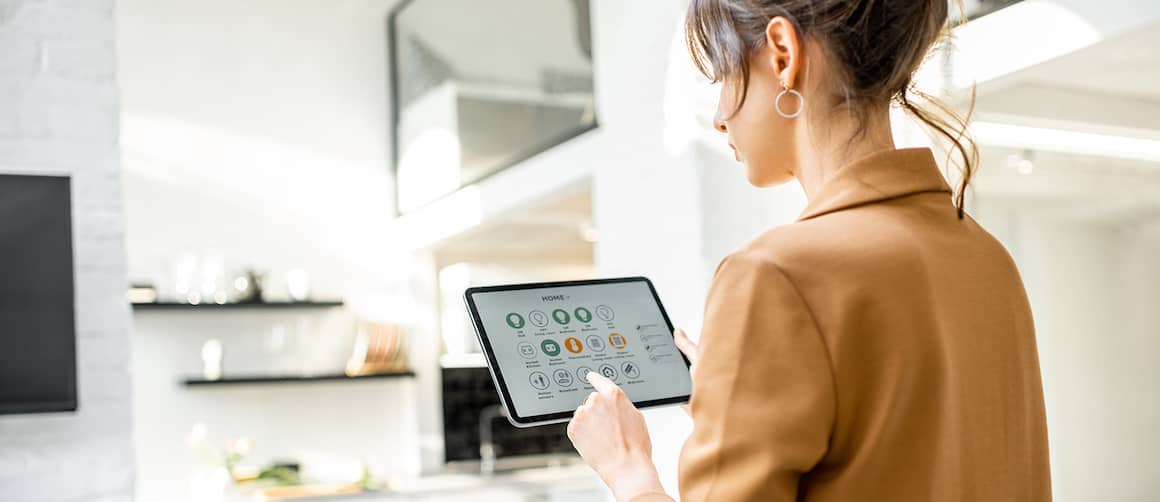Telecom & Technology Consulting

Remember the idea of “smart homes?” We surely do. Just a few years ago this concept had its moment in the sun. Devices connected by sensors were increasingly providing more convenience and enjoyment, saving people time by eliminating the mundane tasks of home life.
Turn on some music, turn off the lights, change the room temperature – all with a request from your voice, even automatically.
Smart technology and smart homes didn’t go away. The fickle media simply glommed on to the latest tech trend, as it always does. But recent events compelled us to revisit the smart homes industry.
Amazon and Google, two key players in the smart homes tech market, have both ran into financial roadblocks. Last year Amazon lost approximately $10 billon from Alexa. And apparently things became so bleak for Google Assistant that the company reorganized the team to focus more on Bard, their burgeoning AI tool.
Despite those troubles, the smart home device market is still growing, proving that consumer demand can outshine industry struggle. Currently, 41% of homes have at least one smart device; that number will reach approximately 48% by 2027.
Those percentages reflect our tech-obsessed society, but also how eco-friendly and efficient smart home technologies are quickly becoming a must-have instead of nice-to-have.
For consumers and smart tech companies, there’s a lot to be excited about. A host of new smart kitchen appliances now integrate with smart home systems better than ever. Manufacturers have made pre-programmed settings and automated cooking times standard in many cooking appliances, helping even novice chefs create gourmet meals on a regular basis.
The “smart” aspect in these appliances comes down to convenience. Via connected technology, you can now turn on your oven anywhere using any device, and even keep tabs on temperature in real-time. With some models, you can rely on built-in cameras and sensors to maintain a virtual eye on cooking progress.
And while we’re still talking about the kitchen, you can also take your refrigerator to a smarter level. Rather than simply being a big metal box to keep your food fresh, your smart fridge can track inventory, automatically order groceries that are low in supply or “out of stock”, and even plan meals for you based on what’s currently on the shelves inside.
Bathrooms are getting bigger brains as well. You can install a digital shower and have customized experiences. Control the temperature, duration, and water flow based on distinct user profiles – personalized it for you, your partner, your kids, etc. Digital showers also integrate with virtual home assistants, allowing you to listen to your favorite music or apps while cleaning up.
Smart technology extends to faucets and toilets. In this case, the convenience brings with it the added benefits of improved hygiene and water conservation. You can install touchless faucets, which eliminate the need for physical contact and reduce the chance of spreading germs. Plus, infrared sensors and algorithms save on water by ensuring just the right amount of water usage for washing hands and brushing teeth.
Toilets can be hands-free, too. These new, smart options include bidet seat integrations, self-cleaning features, and UV sterilization, saving water and giving you a cleaner bathroom on a more consistent basis.
Speaking of water management, smart technology is also available for your home’s entire water network. The latest sprinkler controllers and wireless soil sensors maximize lawn care by assessing weather forecasts, soil moisture levels, and historical data. In turn, you have a customized watering schedule based on real-time data, meaning that your precious plants get the precise amount of water they need. Not a drop extra, not a drop wasted.
All of this innovation isn’t just convenient and eco-friendly – it’s literally a boost for your personal health. Your smart home’s network can connect to wearable fitness trackers and smart exercise equipment like treadmills, stationary bikes, and rowing machines. As you get real-time feedback on exercise routines, smart devices can adjust lighting, room temperature, and entertainment to create the right performance-enhancing mood. Meanwhile, intelligent air purifiers track indoor air quality, with select models being able to identify the presence of harmful particles and pollutants within the home environment.
Naysayers of smart technology are justified when they bring up concerns around security and privacy. After all, connected devices share and transmit a wealth of personal data. Fortunately, much of the latest smart technology includes biometric security and privacy.
That means data protection with fingerprint scanners and facial recognition versus traditional (less secure) passwords and keycodes. In practice, for example, you can program door locks to recognize specific individuals, and even provide access or restrict access to specific parts of the property.
In addition to providing more convenience and security, smart technology innovations can foster a homeowner’s sustainability goals. With the right integration, the energy captured by solar panels can be used to power one’s entire smart technology system, including the individual devices. Consumers enjoy reduced energy costs while doing more to create a healthier planet.
All successful new technology goes through an evolution: First there are early adopters, then it becomes a trend, and finally it becomes the norm that we take it for granted. Based on market growth and shifting societal attitudes, smart home technology will undoubtedly follow this pattern.